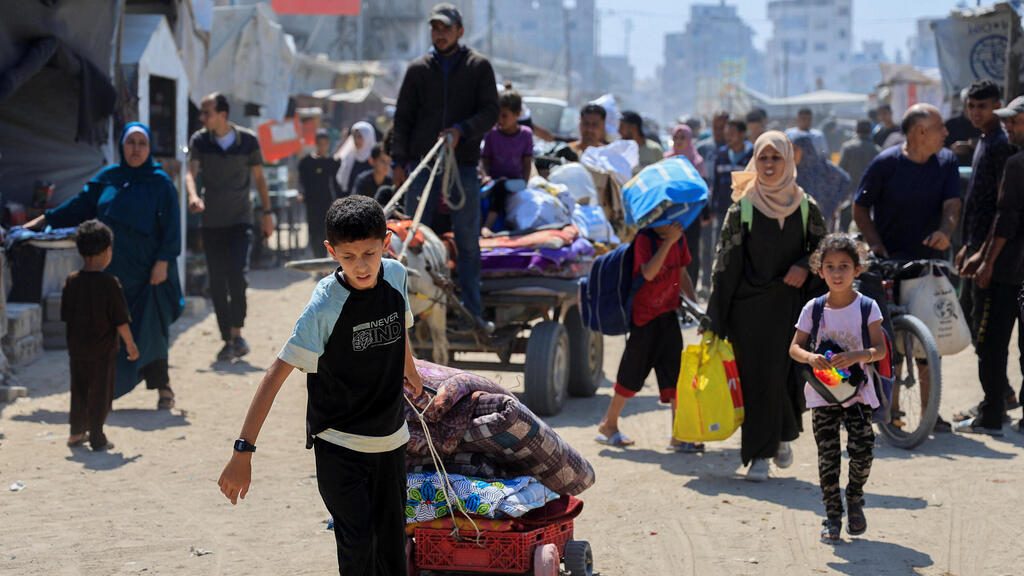Fear and despair dominate daily life. “We feel like someone on death row, waiting for the execution,” said Tamer Burai, a Gaza City businessman, to Reuters. “I’m moving my parents and family south today or tomorrow. I can’t risk losing them if there’s a sudden invasion.”
Karim Sharaf, who documents the crisis, shared an image of a father forced to abandon his home. “He’s not a refugee—he’s a father who had a house and dignity. Suddenly, he must carry his life in a sack, his child in his arms, and walk with no destination, no security,” he said. “His face is scarred with pain, but he stays silent because words are useless now. This is what disaster looks like—this is Gaza today.”
Residents say even staying in the city fills them with dread. One woman, Ghada Mahdi, said: “When the planes come close, I panic. It reminds me of every displacement before—north to west, again and again. Before each military action, just pray: God, please protect our children, our elderly, our women.”
Humanitarian workers warn of catastrophe. “People cannot endure another displacement,” said Dr. Mahmoud Yahya, an activist. “Gaza City is already overflowing with residents from the north and east. Any plan to seize the city could create an unstoppable humanitarian disaster. The only solution is to prevent it before it begins.”
Meanwhile, protesters are planning a Thursday demonstration in Gaza City calling for an end to the war, hoping to increase pressure on Hamas. Some residents look to diplomatic efforts for relief, including talks in Egypt attended by Qatar’s prime minister aimed at bridging gaps between Israel and Hamas. “It’s a morning of hope,” said Abu Suhail, a local resident. “God willing, there won’t be another displacement south. Egypt, please make this end.”
The humanitarian crisis deepens amid severe shortages of food, water, and electricity. In past evacuations, the Israeli military has distributed maps and designated safe routes, while the Coordinator of Government Activities in the Territories (COGAT) communicated evacuation guidelines.
A senior Israeli security official said preparations are underway for a full humanitarian plan, including food, water, medical care, and essential services for potential evacuees. Between 800,000 and 1 million people currently live in northern Gaza, but no evacuation has yet been ordered, and the government has not approved final plans.
The Israeli military announced Monday it is preparing tents and supplies to move residents from Gaza City to the south. But Palestinian economist Mohammed Abu Jayab told Reuters that at least 100,000 new tents would be needed to house displaced families. “The existing tents are worn out and useless in the rain. No new tents have arrived because of Israeli restrictions at the border,” he said.
Some families have already rented homes or shelters in southern Gaza to avoid being caught off guard. “People have learned from past experience,” Abu Jayab explained. “They’d rather move early than wait to be surprised.”





